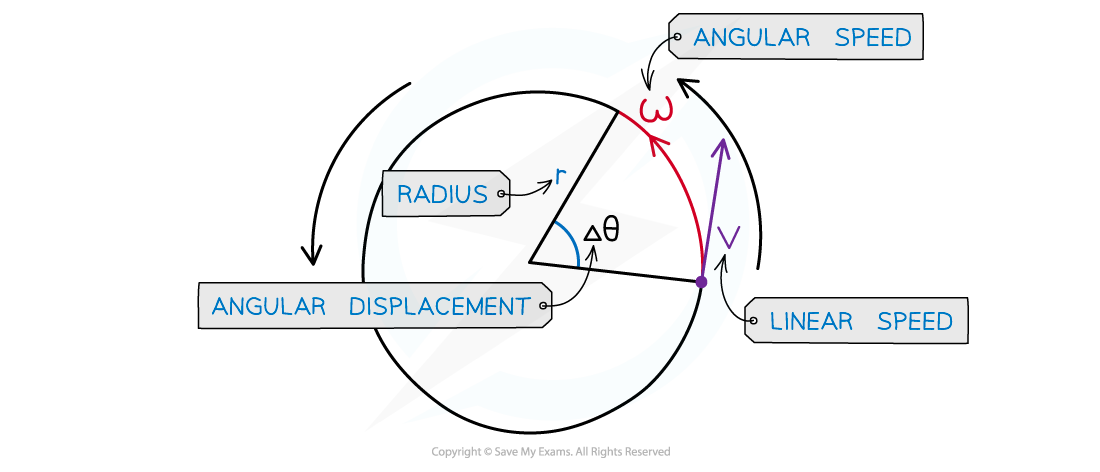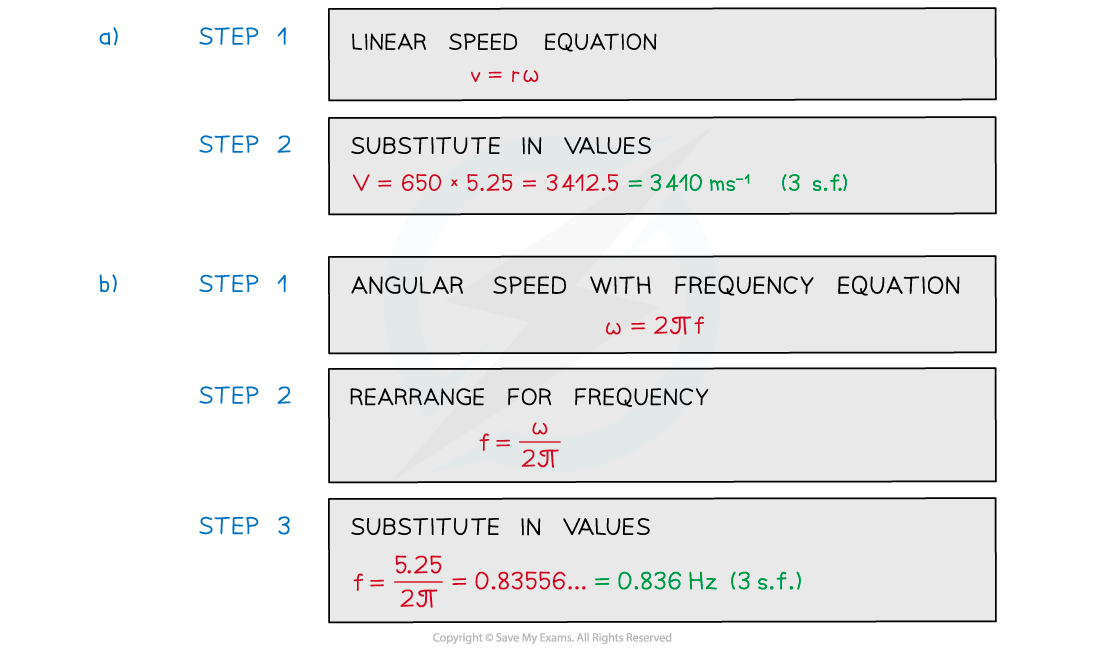Linear Speed (OCR A Level Physics): Revision Note
Exam code: H556
Constant Speed in a Circle
An object moving in a straight line at constant speed has an acceleration of zero
When that object has a net force applied at right angles to its constant linear speed then it begins to move in a uniform circular motion
Whilst the linear speed remains constant the direction of motion is constantly changing
So, there is acceleration towards the centre of the circle and the direction of the net force

When an object is in uniform circular motion, velocity constantly changes direction, but the speed stays the same
Linear velocity is defined as:
The velocity of an object rotating in uniform circular motion, with respect to a linear displacement, as opposed to angular displacement
The linear speed, v, is related to the angular speed, ⍵, by the equation:
v = rω
Where:
v = linear speed (m s–1)
r = radius of circle (m)
⍵ = angular speed (rad s–1)
The equation for linear speed can be derived from the definitions for angular displacement and angular velocity
Linear velocity can be described using the equation:
v =
If the distance travelled in a time, t, is equal to the length of an arc of a circle, rθ:
v =
Where:
θ = angular displacement (°)
Since angular velocity is given by:
The equation for linear speed of an object in circular motion can be written as
v = rω

This equation shows:
As the radius, r, of the path increases so does the linear velocity, v

Therefore, it can be seen:
The angular speed and velocity do not depend on the radius of the circle
The linear speed, however, does depend on the radius of the circle
Worked Example
A bird flies in a horizontal circle with an angular speed of 5.25 rad s−1 of radius 650 m.
Calculate:
a) The linear speed of the bird
b) The frequency of the bird flying in a complete circle
Answer:

Examiner Tips and Tricks
Try not to be confused by similar sounding terms like "angular velocity" and "angular speed". Just like in regular linear motion, you have linear velocity and linear speed: one is a scalar (speed) and the other is a vector (velocity).
Finally, you may sometimes come across ω being labelled as 'angular frequency', because of its relationship to linear frequency f as given by the alternative equation ω = 2πf. Remember, the units of ω are rad s–1, whereas the units of f are Hz.

You've read 0 of your 5 free revision notes this week
Unlock more, it's free!
Did this page help you?